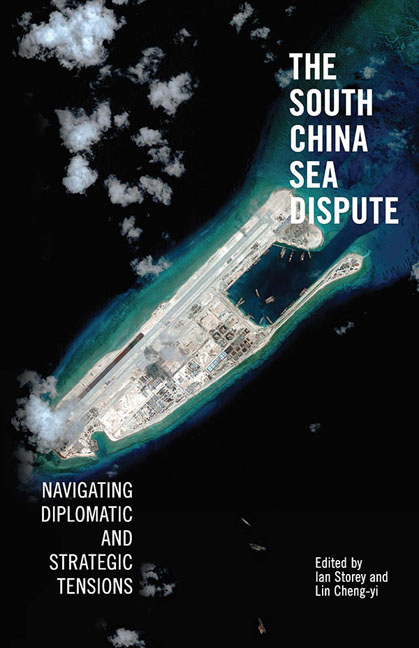Book contents
- Frontmatter
- Contents
- About the Contributors
- 1 Introduction
- 2 Untangling a Complex Web: Understanding Competing Maritime Claims in the South China Sea
- 3 China Debates the South China Sea Dispute
- 4 Taiwan's Evolving Policy towards the South China Sea Dispute, 1992–2016
- 5 The South China Sea: Primary Contradictions in China–Southeast Asia Relations
- 6 Rising Tensions in the South China Sea: Southeast Asian Responses
- 7 The Philippines and the South China Sea Dispute: Security Interests and Perspectives
- 8 A Vietnamese Perspective on the South China Sea Dispute
- 9 The South China Sea Dispute: Options for Malaysia
- 10 The United States and the South China Sea: Front Line of 228 Hegemonic Tension?
- 11 The South China Sea Dispute in U.S.–ASEAN Relations
- 12 Japan and the South China Sea Dispute: A Stakeholder's Perspective
- 13 Conclusion
- Index
11 - The South China Sea Dispute in U.S.–ASEAN Relations
Published online by Cambridge University Press: 19 May 2017
- Frontmatter
- Contents
- About the Contributors
- 1 Introduction
- 2 Untangling a Complex Web: Understanding Competing Maritime Claims in the South China Sea
- 3 China Debates the South China Sea Dispute
- 4 Taiwan's Evolving Policy towards the South China Sea Dispute, 1992–2016
- 5 The South China Sea: Primary Contradictions in China–Southeast Asia Relations
- 6 Rising Tensions in the South China Sea: Southeast Asian Responses
- 7 The Philippines and the South China Sea Dispute: Security Interests and Perspectives
- 8 A Vietnamese Perspective on the South China Sea Dispute
- 9 The South China Sea Dispute: Options for Malaysia
- 10 The United States and the South China Sea: Front Line of 228 Hegemonic Tension?
- 11 The South China Sea Dispute in U.S.–ASEAN Relations
- 12 Japan and the South China Sea Dispute: A Stakeholder's Perspective
- 13 Conclusion
- Index
Summary
Before 2009, the South China Sea dispute was not a major policy issue in relations between the United States and the Association of Southeast Asian Nations (ASEAN). Since then, however, escalating tensions over sovereignty and maritime boundary claims in the South China Sea has become an increasingly salient issue in bilateral relations. Arguably the South China Sea dispute has been used by the administration of President Barack Obama to support its strategy of increased engagement with Southeast Asia and to push for greater U.S. influence in the Asia-Pacific region more generally. For some ASEAN states, if not for all ten members, the upswing of tensions in the South China Sea has increased the perception that the People's Republic of China (PRC) increasingly poses a strategic threat, making it necessary to move closer to the United States to check Beijing's assertive moves and to counter-balance its growing power in Southeast Asia. One of the indicators of this changing attitude is found in ASEAN's decision to invite the United States to join the East Asia Summit (EAS) and the ASEAN Defence Ministers Meeting-Plus (ADMM-Plus).
On 15 November 2009, a joint statement was issued after the 1st U.S.–ASEAN Leaders’ Meeting in Singapore. While Washington and ASEAN agreed to strengthen efforts to combat international terrorism and other transnational crimes such as illicit drug trafficking and piracy, they did not touch upon cooperation on maritime security issues, in particular those related to the South China Sea dispute. Two years later, however, at the 3rd U.S.–ASEAN Leaders’ Meeting in Bali on 18 November 2011, the joint statement included the phrase “South China Sea” for the first time, as well as their concern that peace and stability be maintained in the area. U.S. and ASEAN leaders also agreed to make greater efforts to promote “cooperation on maritime issues, including maritime security, search and rescue, and safety of navigation in the region through promotion of capacity building, information sharing and technology cooperation and explore the possibility of utilizing such venues as the ASEAN Maritime Forum”. In addition, on 19 November 2011, at the 6th EAS, sixteen of the eighteen countries — including the United States and eight ASEAN members — raised the South China Sea issue.
- Type
- Chapter
- Information
- The South China Sea DisputeNavigating Diplomatic and Strategic Tensions, pp. 247 - 271Publisher: ISEAS–Yusof Ishak InstitutePrint publication year: 2016



